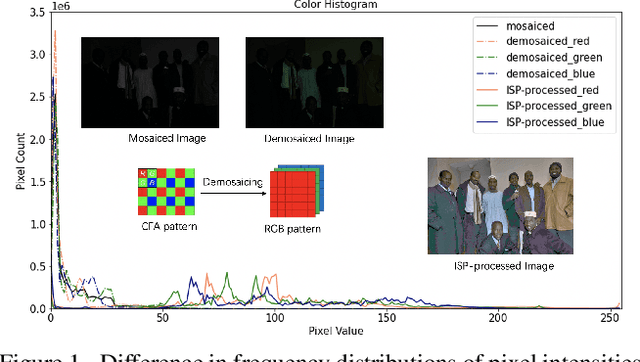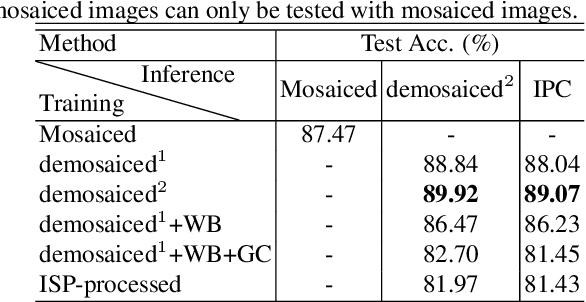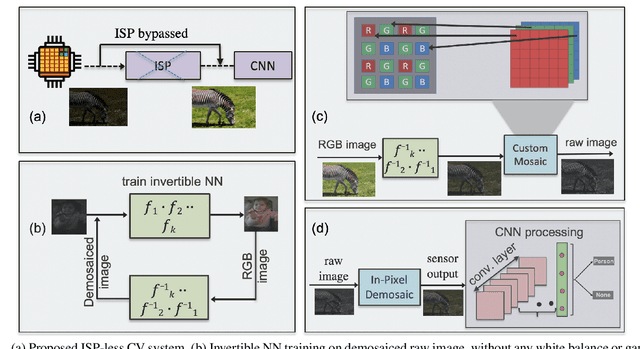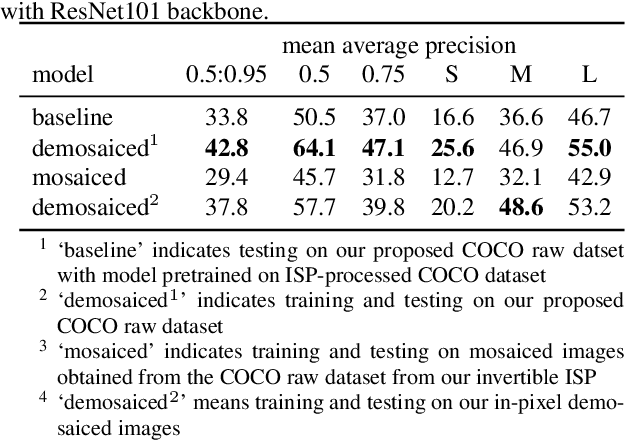Linyu Sun
Large-scale Outdoor Cell-free mMIMO Channel Measurement in an Urban Scenario at 3.5 GHz
May 31, 2024Abstract:The design of cell-free massive MIMO (CF-mMIMO) systems requires accurate, measurement-based channel models. This paper provides the first results from the by far most extensive outdoor measurement campaign for CF-mMIMO channels in an urban environment. We measured impulse responses between over 20,000 potential access point (AP) locations and 80 user equipments (UEs) at 3.5 GHz with 350 MHz bandwidth (BW). Measurements use a "virtual array" approach at the AP and a hybrid switched/virtual approach at the UE. This paper describes the sounder design, measurement environment, data processing, and sample results, particularly the evolution of the power-delay profiles (PDPs) as a function of the AP locations, and its relation to the propagation environment.
Enabling ISP-less Low-Power Computer Vision
Oct 11, 2022



Abstract:In order to deploy current computer vision (CV) models on resource-constrained low-power devices, recent works have proposed in-sensor and in-pixel computing approaches that try to partly/fully bypass the image signal processor (ISP) and yield significant bandwidth reduction between the image sensor and the CV processing unit by downsampling the activation maps in the initial convolutional neural network (CNN) layers. However, direct inference on the raw images degrades the test accuracy due to the difference in covariance of the raw images captured by the image sensors compared to the ISP-processed images used for training. Moreover, it is difficult to train deep CV models on raw images, because most (if not all) large-scale open-source datasets consist of RGB images. To mitigate this concern, we propose to invert the ISP pipeline, which can convert the RGB images of any dataset to its raw counterparts, and enable model training on raw images. We release the raw version of the COCO dataset, a large-scale benchmark for generic high-level vision tasks. For ISP-less CV systems, training on these raw images result in a 7.1% increase in test accuracy on the visual wake works (VWW) dataset compared to relying on training with traditional ISP-processed RGB datasets. To further improve the accuracy of ISP-less CV models and to increase the energy and bandwidth benefits obtained by in-sensor/in-pixel computing, we propose an energy-efficient form of analog in-pixel demosaicing that may be coupled with in-pixel CNN computations. When evaluated on raw images captured by real sensors from the PASCALRAW dataset, our approach results in a 8.1% increase in mAP. Lastly, we demonstrate a further 20.5% increase in mAP by using a novel application of few-shot learning with thirty shots each for the novel PASCALRAW dataset, constituting 3 classes.
 Add to Chrome
Add to Chrome Add to Firefox
Add to Firefox Add to Edge
Add to Edge